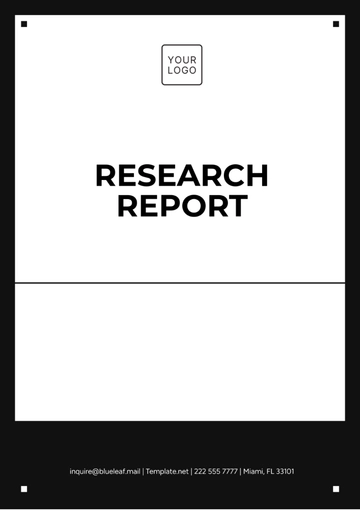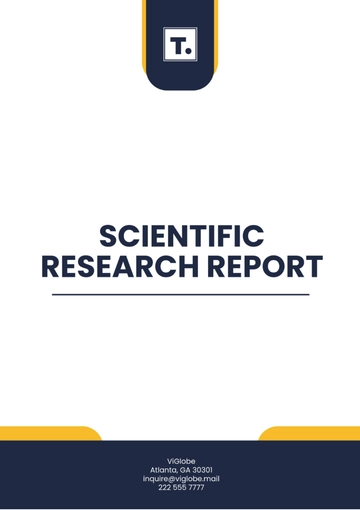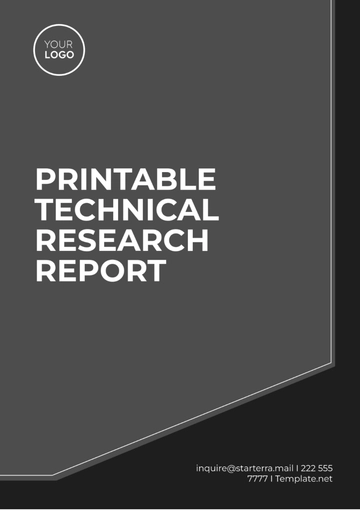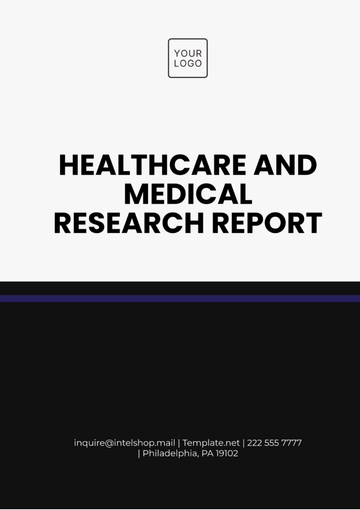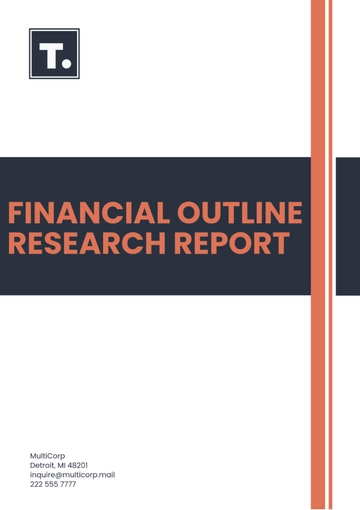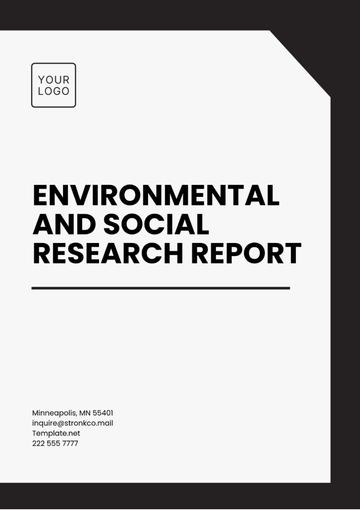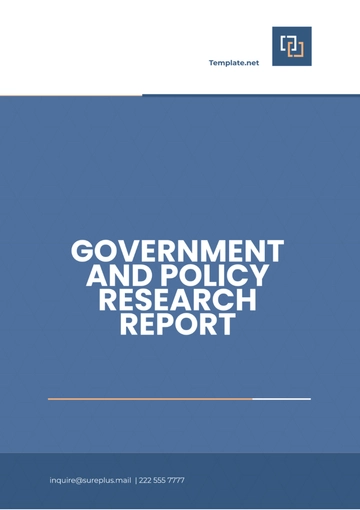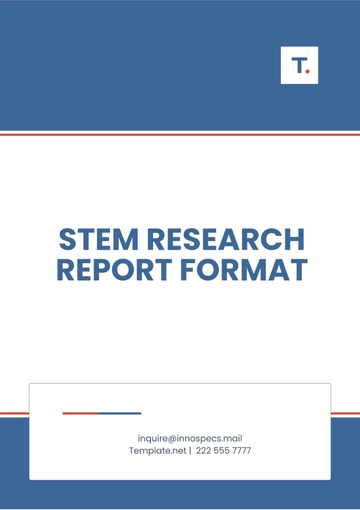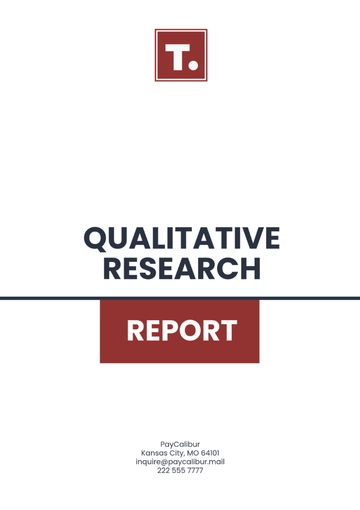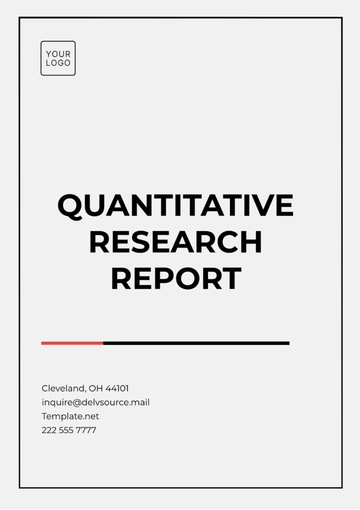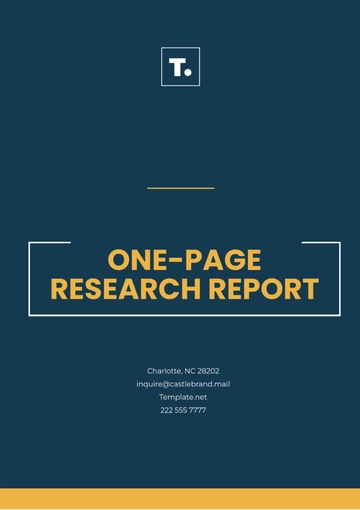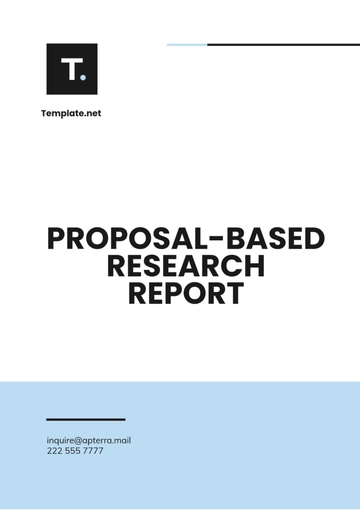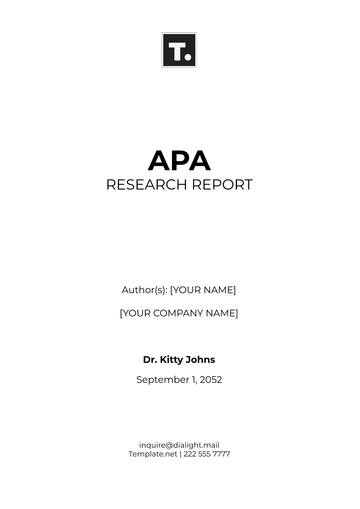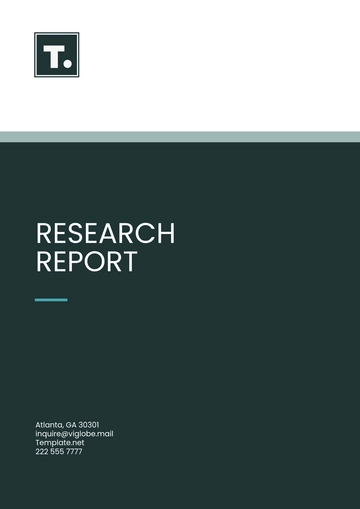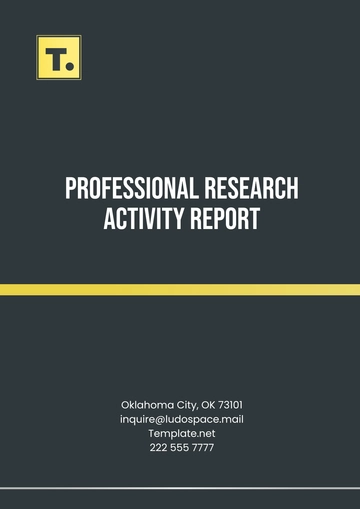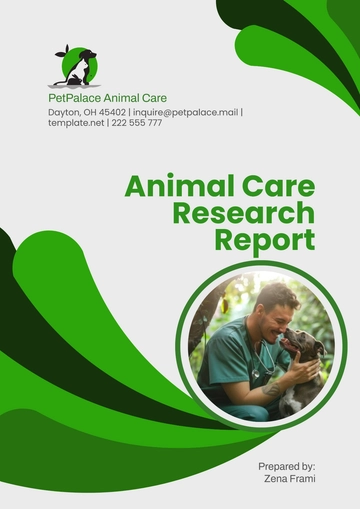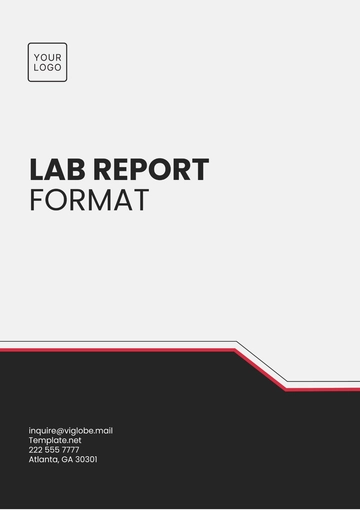Free Health & Safety Campaign Research Report
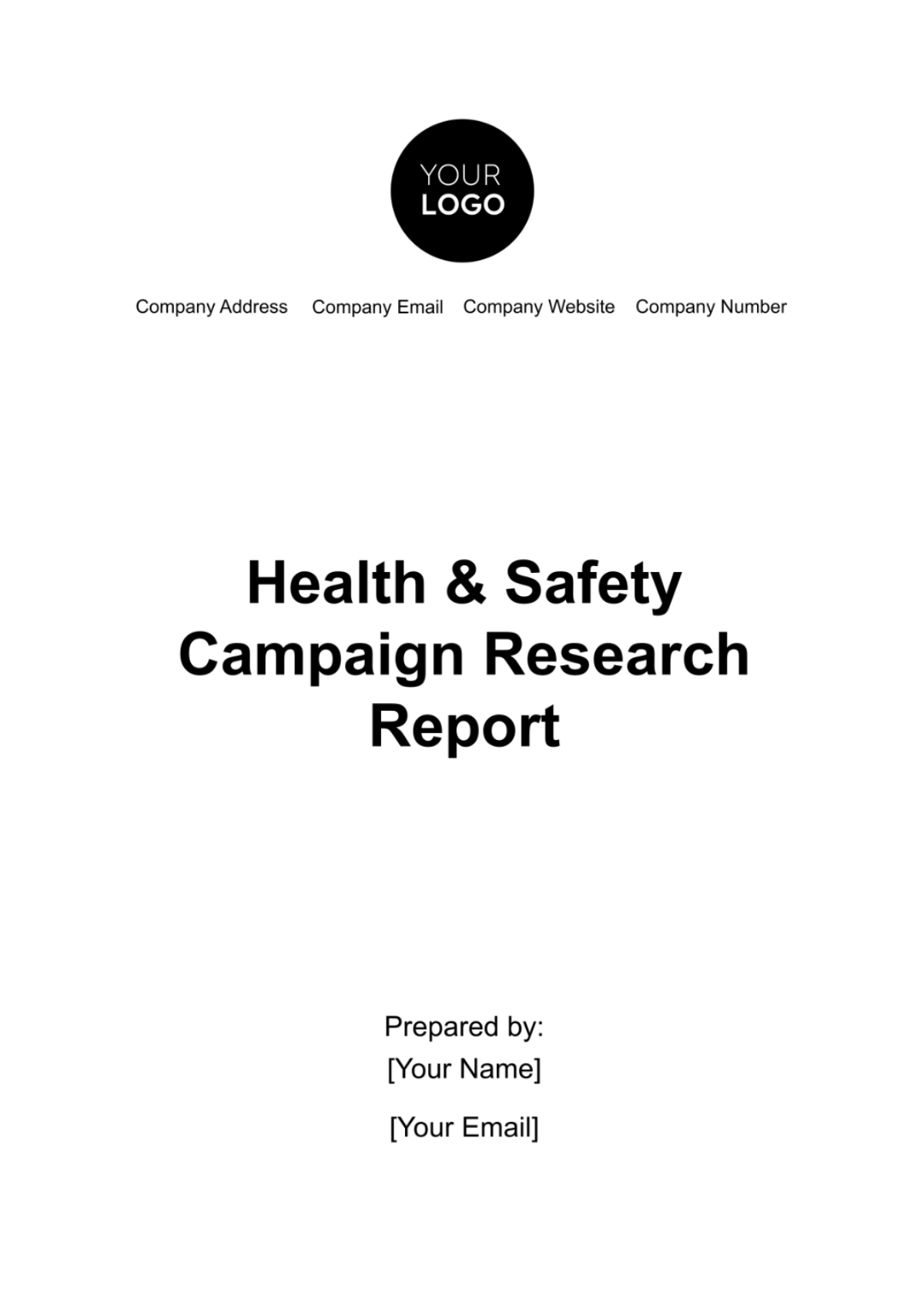
I. Introduction
A. Background
Over the past, a growing emphasis on workplace health and safety has prompted our organization to proactively address potential hazards and promote a culture of safety. Noteworthy incidents and evolving industry standards have underscored the need for a comprehensive health and safety campaign.
B. Objectives
Assess Campaign Effectiveness
Evaluate the impact of the health and safety campaign on employee awareness, behavior, and adherence to safety protocols.
Inform Future Initiatives
Derive insights that will guide the development of future health and safety initiatives, ensuring a continuous improvement in safety culture.
Align with External Standards
Ensure that the health and safety campaign aligns with industry standards, regulatory requirements, and global health and safety trends.
II. Campaign Overview
A. Scope and Duration
The campaign aims to address all departments across our organization over a six-month period, focusing on mitigating ergonomic risks, promoting mental health awareness, and enhancing emergency response preparedness. Key milestones included the successful completion of safety drills and the implementation of ergonomic workstation modifications.
B. Targeted Audience
Our primary audience consisted of frontline employees, supervisors, and managers. Tailored messaging was employed to address the unique safety concerns of each group, ensuring a personalized and effective campaign approach.
C. Key Messages and Materials
Core messages centered around fostering a safety-first mindset, encouraging open communication about safety concerns, and promoting the use of safety equipment. Materials included visually impactful posters, engaging e-learning modules, and informative newsletters distributed throughout the campaign.
D. Strategies Employed
To maximize engagement, we utilized a multifaceted approach, incorporating gamified safety quizzes, interactive workshops, and real-time feedback mechanisms. These strategies aimed to create a dynamic and participatory campaign that resonated with employees across diverse roles and departments.
III. Research Methodology
A. Research Design
Our research design encompassed a mixed-methods approach, combining quantitative and qualitative strategies. This allowed for a comprehensive exploration of the health and safety campaign's impact, ensuring both statistical rigor and in-depth understanding.
B. Data Collection
The data collection process was thoughtfully structured to capture a holistic perspective. It involved the following key elements:
Online Surveys
Administered to all employees, the surveys gauged awareness, engagement, and perception of the health and safety campaign.
In-Depth Interviews
Conducted with campaign organizers, key stakeholders, and a representative sample of employees, these interviews provided qualitative insights into the campaign's execution and impact.
Direct Observations
From safety drills to workshops, real-time observations offered nuanced perspectives on employee behavior and interactions.
C. Survey Instrument
The survey instrument was designed with precision to collect quantitative data on specific aspects of the health and safety campaign. It included questions addressing employee awareness of safety protocols, engagement levels with campaign materials, and perception of the campaign's effectiveness in promoting safety practices.
D. Interview Protocols
Protocols for in-depth interviews were developed to guide conversations with campaign organizers, key stakeholders, and selected employees. The protocols covered planning and execution of the campaign, challenges faced and successful strategies employed, and stakeholders' perceptions of the campaign's impact.
E. Sampling Strategy
A systematic sampling strategy ensured representative participation in both surveys and interviews. This approach aimed to capture diverse perspectives across various departments, roles, and levels within the organization, contributing to the robustness of the data.
F. Data Security and Confidentiality
Stringent measures were implemented to safeguard the privacy and confidentiality of participants. All data were anonymized and stored securely, adhering to ethical standards and organizational policies.
G. Pilot Testing
Before full-scale implementation, survey instruments and interview protocols underwent a pilot testing phase. This allowed for refinement, ensuring clarity and relevance of questions while identifying and addressing any potential challenges in the data collection process.
H. Data Validation and Reliability
To enhance the validity and reliability of collected data, measures such as inter-rater reliability for qualitative coding and pretesting survey questions for clarity and consistency were implemented. Rigorous validation processes were in place to ensure the trustworthiness of the findings.
IV. Findings
The table and graph below provides a snapshot of the findings from the health and safety campaign:
Metric | Pre-Campaign | Post-Campaign |
Awareness of Safety Protocols | 75% | 92% |
The findings reveal a notable improvement in employee awareness with substantial increase. These findings collectively underscore the positive influence of the health and safety campaign on key safety-related metrics within the workplace. The data suggests a successful shift in employee behavior and perceptions, reflecting the efficacy of the campaign strategies employed.
V. Analysis
A. Increased Awareness
The significant rise in awareness is a key indicator of the campaign's success in effectively communicating critical safety information. This heightened awareness suggests that employees are more informed about safety practices and procedures, contributing to a safer work environment.
B. Enhanced Engagement
The substantial increase in engagement with campaign materials signifies a positive response from employees. The campaign's materials, which include various modes of communication, have effectively captured the attention and interest of the workforce, fostering a culture of active participation in safety initiatives.
C. Positive Perception
The notable increase in the perception of the campaign's effectiveness reflects a positive shift in how employees view the overall impact of the campaign on workplace safety. This heightened perception suggests that employees not only recognize the value of the campaign but also acknowledge its positive influence on their safety practices.
D. Holistic Impact
The interconnected nature of these findings underscores the campaign's holistic impact on various dimensions of workplace safety. The simultaneous improvement in awareness, engagement, and perception indicates a synergistic effect, wherein each aspect reinforces and enhances the effectiveness of the others.
E. Foundation for Continuous Improvement
While celebrating the positive outcomes, it is essential to view these findings as a foundation for continuous improvement. Identifying areas where the campaign has excelled provides valuable insights, while recognizing any gaps or challenges informs strategic adjustments for future health and safety initiatives.
VI. Impact Assessment
A. Behavioral Shifts
The observed behavioral shifts among employees are indicative of the campaign's success in influencing safety-conscious actions. From increased adherence to safety protocols to proactive engagement in safety drills, these shifts underscore the tangible impact on daily practices.
B. Organizational Culture
The campaign has not only influenced individual behaviors but has also contributed to shaping a safety-centric organizational culture. This is reflected in heightened communication about safety concerns, collective responsibility for maintaining a safe environment, and the integration of safety considerations into routine decision-making processes.
C. Key Performance Indicators
Quantitative indicators, such as the decrease in reported incidents and improved response times during safety drills, serve as objective measures of the campaign's impact. These key performance indicators validate the success of the implemented strategies in fostering a safer workplace.
VII. Lessons Learned
A. Effective Communication Strategies
The campaign highlighted the effectiveness of diverse communication strategies, including visual materials, interactive sessions, and real-time feedback mechanisms. Tailoring communication methods to diverse employee preferences proved instrumental in maximizing engagement.
B. Continuous Training Needs
Identifying continuous training needs emerged as a crucial lesson. While the campaign improved awareness, ongoing training sessions are essential to reinforce safety practices and address evolving workplace hazards effectively.
C. Flexibility and Adaptability
The campaign's success was also attributed to its flexibility and adaptability. The ability to adjust strategies based on real-time feedback and emerging challenges ensured that the campaign remained dynamic and responsive to the evolving needs of the workforce.
D. Employee Involvement and Ownership
The importance of fostering employee involvement and ownership in safety initiatives became evident. Establishing channels for employees to contribute suggestions, share concerns, and actively participate in shaping safety programs enhances the sense of ownership and collective responsibility.
E. Continuous Improvement Framework
The campaign reinforced the significance of adopting a continuous improvement framework. Regular evaluations, feedback loops, and proactive adjustments based on lessons learned are integral components in ensuring the sustained effectiveness of health and safety initiatives.
VIII. Recommendations
A. Implement Continuous Training Modules
Develop and implement ongoing training modules to reinforce safety practices and address evolving workplace hazards. These modules should be tailored to different employee roles and regularly updated to reflect emerging safety concerns.
B. Enhance Communication Channels
Strengthen communication channels to facilitate continuous dialogue on safety matters. Utilize a mix of digital platforms, regular town hall meetings, and suggestion boxes to encourage employees to share insights, report concerns, and actively contribute to the safety discourse.
C. Integrate Safety Practices into Onboarding
Integrate comprehensive safety training into the onboarding process for new employees. This ensures that safety protocols become ingrained from the outset, fostering a culture of safety awareness among all staff members.
D. Regularly Update Emergency Response Plans
Regularly review and update emergency response plans based on lessons learned from safety drills and real incidents. This ensures that the organization remains well-prepared to handle unforeseen events and swiftly respond to emergencies.
E. Promote Employee-Led Safety Initiatives
Encourage employees to take an active role in safety initiatives by recognizing and rewarding innovative safety practices. Empowering employees to initiate and lead safety campaigns fosters a sense of ownership and shared responsibility.
F. Invest in Ergonomic Assessments
Conduct regular ergonomic assessments to identify and mitigate potential workplace hazards. Investing in ergonomic modifications and employee education on ergonomic best practices contributes to long-term health and well-being.
G. Establish a Metrics Dashboard
Implement a comprehensive metrics dashboard to track key safety indicators consistently. This dashboard should include metrics such as incident rates, near-miss reporting, and employee feedback, providing real-time insights into the organization's safety performance.
IX. Conclusion
The analysis of the health and safety campaign reveals a resounding success in fostering positive changes within our organizational landscape. The marked increase in awareness, engagement, and the overall perception of the campaign's effectiveness serves as a testament to its impact on employee behavior and workplace safety practices. These findings not only validate the strategic choices made during the campaign but also emphasize the crucial role of sustained, organization-wide commitment to health and safety initiatives. Looking ahead, the identified lessons learned and actionable recommendations provide a robust foundation for continuous improvement. By incorporating these insights into the fabric of future campaigns, we can propel our organization towards an even safer and more resilient future.
- 100% Customizable, free editor
- Access 1 Million+ Templates, photo’s & graphics
- Download or share as a template
- Click and replace photos, graphics, text, backgrounds
- Resize, crop, AI write & more
- Access advanced editor
Introducing Template.net's Health & Safety Campaign Research Report Template, the essential tool for ensuring workplace safety compliance. Completely customizable and editable within our Ai Editor Tool, this template allows seamless customization to fit your specific needs. Simplify health and safety reporting with our user-friendly platform, exclusively available at Template.net. Ensure your workplace adheres to regulations effortlessly.
You may also like
- Sales Report
- Daily Report
- Project Report
- Business Report
- Weekly Report
- Incident Report
- Annual Report
- Report Layout
- Report Design
- Progress Report
- Marketing Report
- Company Report
- Monthly Report
- Audit Report
- Status Report
- School Report
- Reports Hr
- Management Report
- Project Status Report
- Handover Report
- Health And Safety Report
- Restaurant Report
- Construction Report
- Research Report
- Evaluation Report
- Investigation Report
- Employee Report
- Advertising Report
- Weekly Status Report
- Project Management Report
- Finance Report
- Service Report
- Technical Report
- Meeting Report
- Quarterly Report
- Inspection Report
- Medical Report
- Test Report
- Summary Report
- Inventory Report
- Valuation Report
- Operations Report
- Payroll Report
- Training Report
- Job Report
- Case Report
- Performance Report
- Board Report
- Internal Audit Report
- Student Report
- Monthly Management Report
- Small Business Report
- Accident Report
- Call Center Report
- Activity Report
- IT and Software Report
- Internship Report
- Visit Report
- Product Report
- Book Report
- Property Report
- Recruitment Report
- University Report
- Event Report
- SEO Report
- Conference Report
- Narrative Report
- Nursing Home Report
- Preschool Report
- Call Report
- Customer Report
- Employee Incident Report
- Accomplishment Report
- Social Media Report
- Work From Home Report
- Security Report
- Damage Report
- Quality Report
- Internal Report
- Nurse Report
- Real Estate Report
- Hotel Report
- Equipment Report
- Credit Report
- Field Report
- Non Profit Report
- Maintenance Report
- News Report
- Survey Report
- Executive Report
- Law Firm Report
- Advertising Agency Report
- Interior Design Report
- Travel Agency Report
- Stock Report
- Salon Report
- Bug Report
- Workplace Report
- Action Report
- Investor Report
- Cleaning Services Report
- Consulting Report
- Freelancer Report
- Site Visit Report
- Trip Report
- Classroom Observation Report
- Vehicle Report
- Final Report
- Software Report
